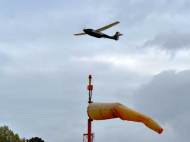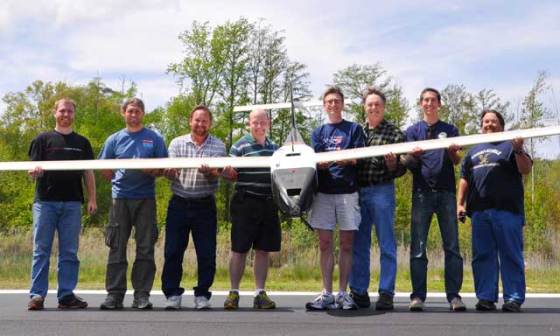Liquid hydrogen and fuel cell powered UAV sets new endurance record
 Researchers at the U.S. Naval Research Laboratory (NRL) broke the endurance record for small electric Unmanned Aerial Vehicles (UAVs) by developing a vehicle powered by liquid hydrogen fuel and a fuel cell. This flight shatters their previous record of 26 hours and 2 minutes set in 2009 using the same vehicle, but with gaseous hydrogen stored at 5000 psi.
Researchers at the U.S. Naval Research Laboratory (NRL) broke the endurance record for small electric Unmanned Aerial Vehicles (UAVs) by developing a vehicle powered by liquid hydrogen fuel and a fuel cell. This flight shatters their previous record of 26 hours and 2 minutes set in 2009 using the same vehicle, but with gaseous hydrogen stored at 5000 psi.
Although long endurance is achievable with conventional fuels, hydrocarbon-fueled systems are usually loud, inefficient, and unreliable when it comes to these small flying vehicles. On the other hand, small, electric, battery-powered systems are limited to endurances of only several hours. These are the reasons why NRL researchers started developing UAVs which rely on hydrogen as their source of power.
In order to beat their old record, the researchers opted for liquid hydrogen which is three times denser than 5000-psi compressed hydrogen. The cryogenic liquid is stored in a lightweight tank, allowing more hydrogen to be carried onboard to increase flight endurance. Success in flight requires developing a high quality, lightweight insulated flight dewar for the cryogenic fuel, plus matching the boil off of the cryogenic hydrogen to the vehicle fuel consumption.
“Liquid hydrogen coupled with fuel-cell technology has the potential to expand the utility of small unmanned systems by greatly increasing endurance while still affording all the benefits of electric propulsion”, said Dr. Karen Swider-Lyons, NRL principal investigator.
Named Ion Tiger, the UAV flew for 48 hours and 1 minute on April 16-18 by using liquid hydrogen fuel in a NRL-developed cryogenic fuel storage tank and delivery system.
To address the logistics of in-theater supply of liquid or gaseous hydrogen, NRL proposes in-situ manufacture of LH2 for use as fuel. An electrolyzer-based system would require only water for feedstock, and electricity, possibly from solar or wind, to electrolyze, compress, and refrigerate the fuel.










Leave your response!